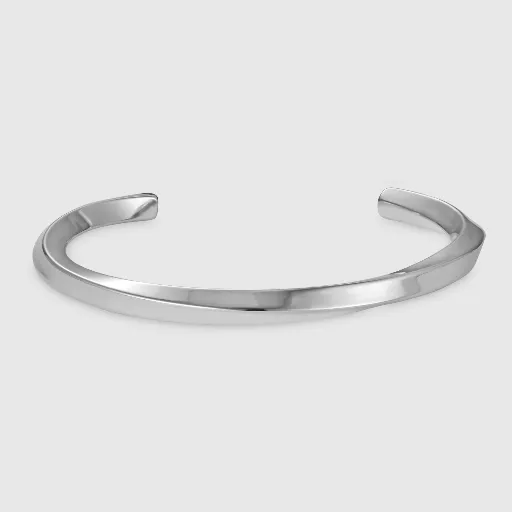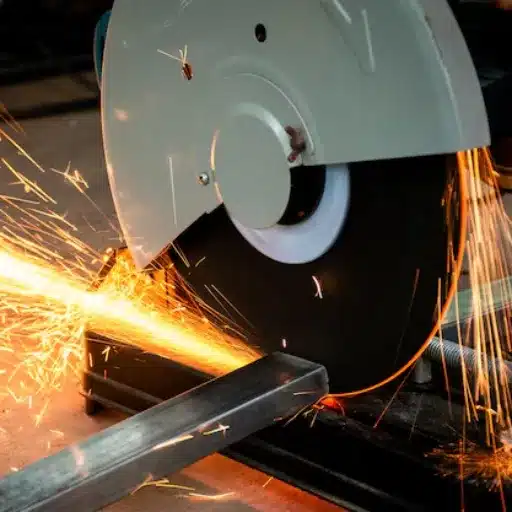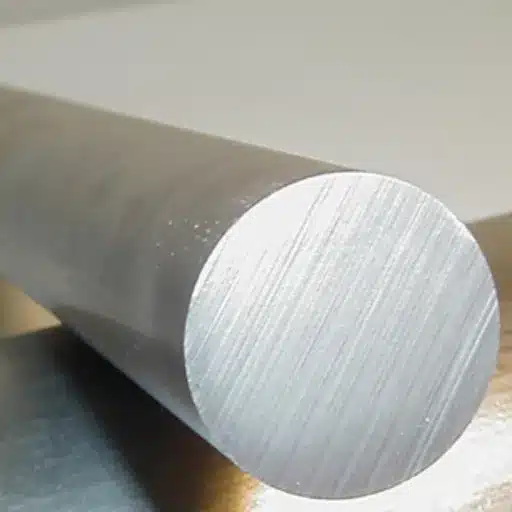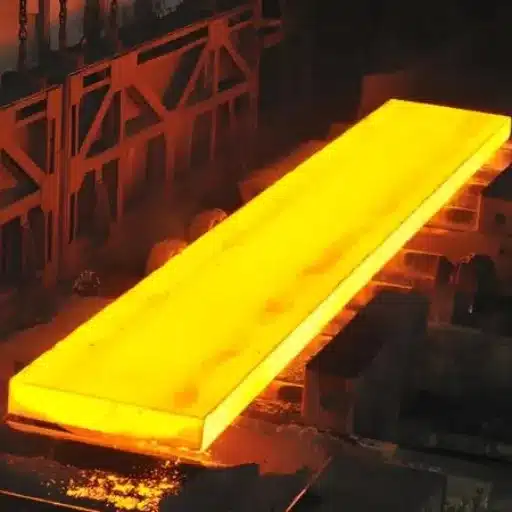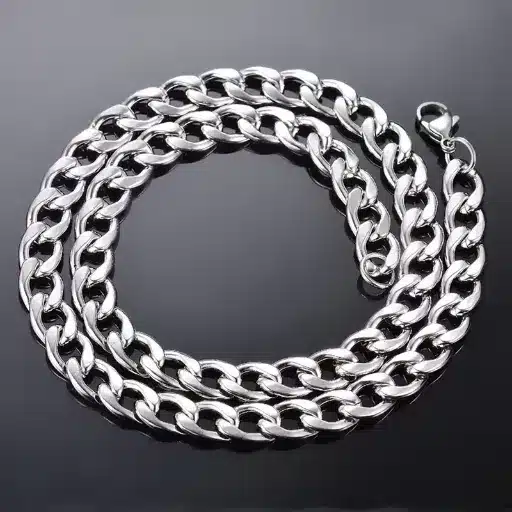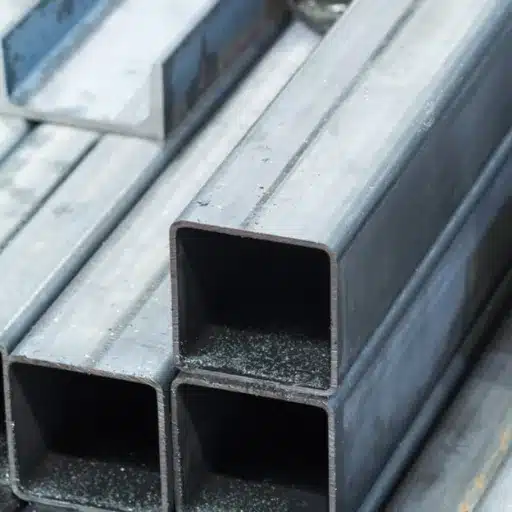Due to its durable nature, resistance to rust and ability to be employed in numerous ways, stainless steel can be observed in most areas. Of all the grades of stainless steel, it would be fair to say that grade 316 is the most powerful of all, owing to its amazing attributes and advantages. However, what makes 316 stainless steel so unique is that it is mainly used in marine applications, medical applications, and other harsh industries. This study delves into 316 stainless steel, its distinct advantages and properties, its multiple practical applications, and why such an alloy has become essential in present-day engineering and geographical design. So, whether you are a factory worker, engineer, or someone who simply wants to learn more метал about different grades of steel, courtesy of this thorough summary, you will understand 316 stainless steel and its core structures.
Introduction to Stainless Steel
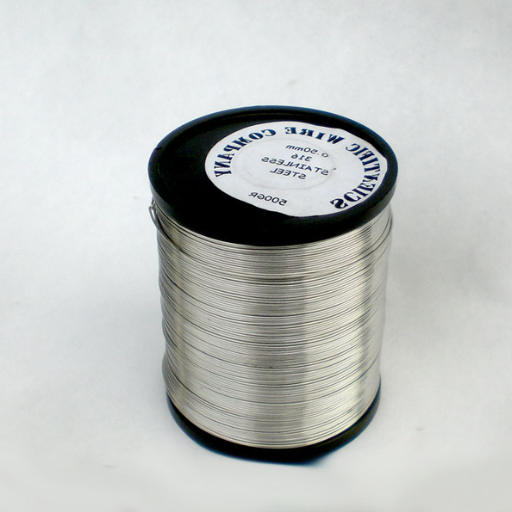
One of the main properties of stainless steel is its ability to withstand corrosion, primarily because it is an alloy that consists mainly of iron and has a percentage of chromium, which is no less than 10.5%. The chromium content in stainless steel reacts with oxygen in the atmosphere, forming an oxide. This restricts the compound’s oxidative elements, which help form stainless steel. The material has different types of stainless steel that are corrosion-resistant and rust-proof on the surface. Due to the ability of stainless steel not to break or fail or need repair for a long time in service, the metal has found numerous applications in various industries. In addition, it is present in different contexts, and grading is available for use in these spaces. The required criteria include conditions such as the material strength, the operating temperature, and the aggressiveness of the environment that it has to withstand.
What is Stainless Steel?
Corrosion-resistant inox is an alloy consisting mainly of chromium and iron (not less than 10.5 per cent of the latter) to which are sometimes added manganese, nickel or more rarely molybdenum, or tungsten to increase the strength and semi-customary or commercial use or uses of the product.
Importance of Steel Grades
Understanding steel grades is essential in knowing how effective and long-lasting the stainless steel will be in different settings. Every single grade has specific chemical and mechanical properties that characterize it, and henceforth, the steel grade will be used for various purposes in other sectors. For instance, the 304 grade, the most common, consists of 18 percent chromium and 8 percent nickel. It is very corrosion and oxidation resistant, making it perfect for kitchens, food, and construction. In contrast, the grade 316 contains about 2 to 3 percent molybdenum that prevents the water or any other alkalisation that may cause it to break down; this is recommended for marine, chemical engineering, and pharmaceutical steel enhancement.
Besides these grades, there are also duplex stainless steels, which contain half the number of austenitic and the other half ferritic structures, as seen in Grade 2205, allowing higher strength and better performance against stress corrosion cracking. Due to the current market trend, duplex grades are becoming more popular, and it is reported that it is expected to grow at a CAGR of more than 4.3% in the oil and gas industry, among others. Defined steel grades allow engineers or whoever wants to manufacture a product to select an appropriate material for their needs, be it high pressures or high temperatures. The recent improvements in the field have been to develop new environmentally friendly grades that utilize existing materials instead of compromising the quality of the original material. Such development work in steel grades is vital because modern-day industries look for extension and better results focused on less maintenance, even under harsh conditions.
Overview of Common Stainless Steel Grades
| Grade | Type | Composition | Key Features | Common Applications |
|---|---|---|---|---|
| 304 | Austenitic | 18% Chromium, 8% Nickel | Corrosion-resistant, versatile | Kitchenware, food processing, hardware |
| 316 | Austenitic | Adds 2-3% Molybdenum | High chloride resistance | Marine applications, pharmaceuticals |
| 430 | Ferritic | 16-18% Chromium, low Nickel | Magnetic, good basic corrosion | Automotive trim, appliances, indoor decor |
| 410 | Martensitic | 12-14% Chromium, 0.4% Carbon | Hardenable, strong, moderate corrosion | Cutlery, fasteners, turbine blades |
| 2205 | Duplex | 22% Chromium, 5% Nickel | High strength, chloride resistant | Offshore platforms, chemical processing |
| 17-4PH | Precipitation-Hardened | 17% Chromium, 4% Nickel | High strength, good corrosion | Aerospace, pump shafts, surgical tools |
Detailed Analysis of 316 Stainless Steel
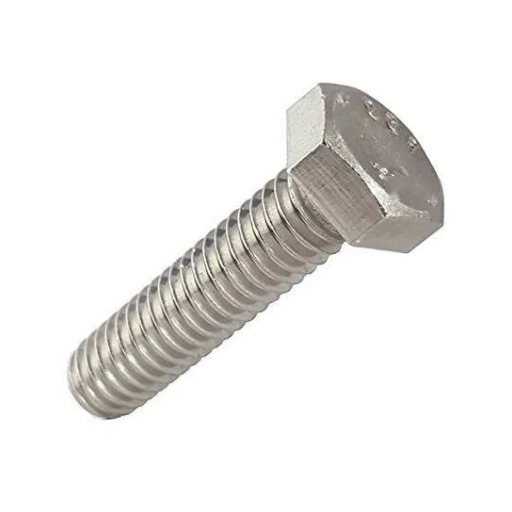
Your stainless-steel grade, 316, is an alloy of its own, characterized by a polished surface, high tensile strength, and corrosion-resistant abilities seen in various applications. The alloy contains enough molybdenum to stabilize it against pitting or crevice attack whenever exposed to chlorides, which is a norm in seawater. It is useful in industries and medical applications, as it maintains a good temperature range without the loss of structure.
Fundamental Use Cases
- Seaside-Based Dwellings: Building ships, components of the sea, and other similar structures to prevent corrosion in salty water.
- Surgical Instruments: It is mostly employed in surgical instruments because it is compatible with human tissues and easy to clean.
- Reactors: They are very effective in solving the problems of chemical corrosion in the manufacture of tankers, pipelines, and any other spatial arrangements.
Reasons Synthesis
316 stainless steel is favored for activities where longevity, withstand exposure to extreme conditions, and performance are expected. The metal’s features make it suitable for serving mission-essential needs in various sectors.
Composition and Properties of 316 Stainless Steel
| Category | Details |
|---|---|
| Chemical Composition | 16-18% Chromium, 10-14% Nickel, 2-3% Molybdenum |
| Mechanical Properties | 515 MPa tensile strength, 205 MPa yield strength |
| Physical Properties | Density 8 g/cm³, melting point 1400°C |
| Corrosion Resistance | Excellent, especially against chlorides |
| Heat Resistance | Up to 870°C (continuous), 925°C (intermittent) |
| Fabricability | Easy to form, weld, and machine |
| Common Applications | Marine, medical, food processing, architecture |
Corrosion Resistance of 316 Stainless Steel
What makes 316 stainless steel unique is its ability to resist corrosion under very different circumstances, which is why it is used for things that require utmost care. The alloy best serves these purposes due to certain constituents that make it possible to endure different conditions, which would be corrosive to ordinary metals. The following five points describe the alloy’s resistance to corrosion:
- Resistance to pitting and crevices
316 stainless steel, because of the molybdenum content of 2 to 3 percent, is highly resistant to pitting and crevice corrosion, particularly in saline environments such as seawater or installations for chemical processing.
- The Capacity to Withstand Oxidation
316 stainless steel has high oxidation resistance when exposed to such temperatures as 1600°F (870°C) in continuous service and 1500°F (815°C) in intermediate service.
- Performance in Mildly Corrosive Conditions
The alloy is typically used in conditions involving exposure to acidic materials such as sulphuric, hydrochloric, and acetic acids, which are used practically in different industries.
- Susceptibility of the Structure to Stress Corrosion Cracking
Due to its austenitic nature, 316 stainless steel is quite resistant to stress corrosion cracking, especially in conditions of increased temperature and salinity, which are known to hasten such degradation.
- Protection against the ordinary forms of corrosion
The rather rational chemical composition of 316 stainless steel gives a general protection from rusting or corrosion in a range of atmospheric and marine conditions, which is very advantageous to this steel in use, both externally and internally.
These properties make 316 stainless steel ideal for applications where structural stability and performance cannot be compromised by exposure to corrosive environments.
Comparison: 316 vs 304 Stainless Steel
| Category | 316 Stainless Steel | 304 Stainless Steel |
|---|---|---|
| Chemical Composition | 16-18% Cr, 10-14% Ni, 2-3% Mo | 18-20% Cr, 8-10.5% Ni |
| Corrosion Resistance | Excellent, resists chlorides | Good, less resistant to chlorides |
| Mechanical Properties | Higher strength, tensile 515 MPa | Moderate strength, tensile 500-700 MPa |
| Heat Resistance | Up to 870°C continuous, 925°C intermittent | Up to 925°C continuous, good oxidation |
| Cost | Higher due to molybdenum content | Lower, more economical |
| Common Applications | Marine, medical, chemical processing | Kitchenware, architecture, food processing |
Applications of 316 Stainless Steel
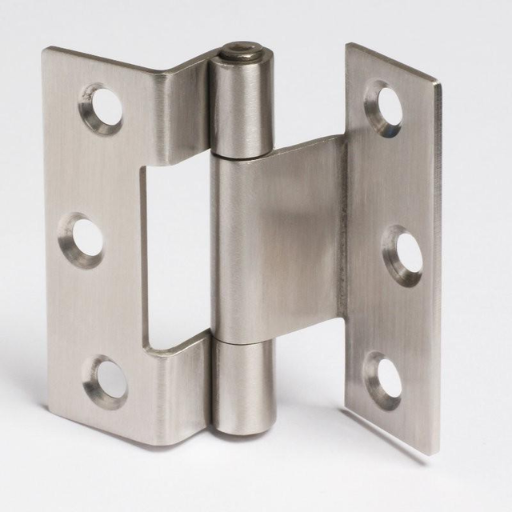
Architecturals are characterized by high strength and corrosion resistance, having the potential to satisfy most sectors’ demands and requirements for grade 316 steel. The following list gives a sense of how it can be used:
- Naval Furnishing
- Clarification: Naval fittings, propeller shafting, and seawater installations utilize 316 stainless steel because it can withstand even the salt-containing atmosphere.
- Control Data: For instance, 316 is known to resist saltwater environments for 10 to 20 years without much upkeep.
- Chemical Process Equipment
- Clarification: It is used to keep chemicals that can easily corrode metals, such as piping and tanks, as it can resist a wide range of acid and chloride movements within the vessels.
- Control Data: Under controlled experiments, acidic environments of either sulfuric acid or hydrochloric acid exposure are likely to occur, but no more than 0.1 mm/year of corrosion is experienced.
- Medical Devices
- Clexicure products, such as 316 stainless steel, offer several benefits, such as being non-reactive and clean. Thus, they are highly recommended for medical device manufacturers, such as those making surgical instruments and orthopedic implants.
- Control Data: Several competent authorities authorize the use of 316 stainless steel in different medical applications, as it is biocompatible.
- Food and the Beverages Industry
- Clarification: Because of its contamination-resistant properties, stainless steel is used to fabricate process equipment, storage vessels, and kitchen hoods.
- Control Data: The material adheres to food safety standards in the US and Europe for safe use and long-term consumption.
- Heavy Duty Machine Parts
- Clarification: Using such materials, thermal and chemical processes can be conducted in heat exchangers’ hearths or industrial-size pumps, among other equipment.
- Control Data: Temperatures within a range of 200°F below to over 1500°F have been tested, and tensile strength holding elongation test performance has not changed.
These uses explain why it will always be one of the most needed metals in those niches: high quality, hygiene, and shielding against corrosion.
Industries Utilizing 316 Stainless Steel
Multialloy 316 stainless steel is a significant element in multiple industries because of its outstanding corrosion resistance, high hardenability, and retention of properties even at high temperatures. Given the importance of these industries, the following is a brief overview of the critical usage of grade 316 stainless steel and the necessity for such use in these industries:
1. Marine Sector
The salty atmosphere of the marine environment, which is prone to corrosion, is quite aggressive, as it is always saturated with salt water and moisture. This is the reason that many rigs, shipyards, and oil rigging props utilize grade 316 for manufacturing purposes.
- Example applications: Grade 316 is used for propeller shaft components, fastener housings, and pipes used in desalination plants.
- Other Information: Furthermore, studies have also shown that 316 stainless steel performs 20 to 30% better and has a greater service life in maritime applications compared to 304, which is only due to its lower molybdenum content.
2. Food & Drink
In food production and beverage manufacture, grade 316 stainless steel is applied to a large part of hygiene apparatus due to the acids present in foods and the sterilizing agents used.
- Example applications: Storage tanks for food products such as milk industry equipment, tanks for brewing, and, of utmost importance, commercial kitchens.
- Other statistics: The US Food and Drug Administration (FDA) permits the handling of edible consumables with 316-grade stainless steel because it does not react with acidic foods or beverages.
3. Pharmaceutical/Medical Sector
The alloy is widely utilized among hospitals and pharmaceutical companies because it can withstand sterilization and because of its biocompatibility properties.
- Example application: Establishing the viability of surgical tools, medical devices, and aseptic processing clean pharmaceutical equipment.
- Other statistics: In another experiment, it was noted that when 316L was used as a medical implant, it did not cause any inflammation but had sustainable gross mechanics for quite a long duration.
4. Chemical/Petrochemical Sector
316 stainless steel is one of the most commonly used stainless steels in the chemical and petroleum industries, precisely because it can withstand the aggressive media and high temperatures.
- Example application: Heat exchangers, reactors, chemical tanks, pipelines, and connections rely on 316 SS due to its excellent corrosion \ resistance capabilities.
- Test results: Chemical testing proves that 316 stainless steel remains effective even when utilizing aggressive chemicals like sulfuric acid, acetic acid, and chloride, while other materials tend to fail completely.
5. Design, Construction & Architecture
316 stainless steel is very popular for building envelopes, bridges, statues or sculptures; these regions have adverse climatic conditions.
- Example application: Handrails, walls, and elements.
- Some statistics: Analysis of protection against corrosion in metals shows that due to this resistance, the period of maintaining the appearance and design of buildings constructed with such types of 316 anti-corrosion steels is higher by up to 50% in coastal and industrial areas as compared to those that use alternative materials.
6. The Power Industry
316 stainless steel is indispensable in both traditional and renewable energy applications because it is durable and can withstand extreme temperatures.
- Example applications: Solar panel supporting structures, underwater windmills, geothermal heat pumps, and steam generators.
- Some statistics: Tests suggest that 316 stainless steel can operate functionally at temperatures above 1000 degrees Celsius, which is a vital need, especially in steam-powered turbines.
The wide range of applications of 316 stainless steel in the said fields, amongst others, emphasizes the significance of such intrusions to upgrade each sector. It is the same versatile combination of strength and use that industrialization hopes to achieve.
Common Products Made from 316 Stainless Steel
Some of the products I have observed in wide-scale use include marine/seafaring–grade equipment, chemical industry implements, medical devices such as surgical tools, and food manufacturing appliances made from 316 grade stainless steel. Understandably, corrosion and heat resistance make it a preferred choice for manufacturing some items, such as tanks, pharmaceutical equipment, and heat exchangers. It also offers considerable applications in construction and mechanical equipment piping in different spheres, as seen from my observation.
Benefits of Using 316 Stainless Steel in Construction
| Category | Benefits of 316 Stainless Steel in Construction |
|---|---|
| Durability | Withstands harsh conditions, scratches, dents, and impacts |
| Corrosion Resistance | Resists chemical, saltwater, and environmental corrosion |
| Aesthetic Appeal | Sleek finish, complements various designs |
| Versatility | Easy to cut, weld, and customize |
| Sustainability | Fully recyclable and eco-friendly |
| Heat Resistance | Performs well under high temperatures |
| Longevity | Low maintenance reduces long-term costs |
| Hygiene | Resists bacteria, ideal for healthcare facilities |
Welding and Fabrication of 316 Stainless Steel
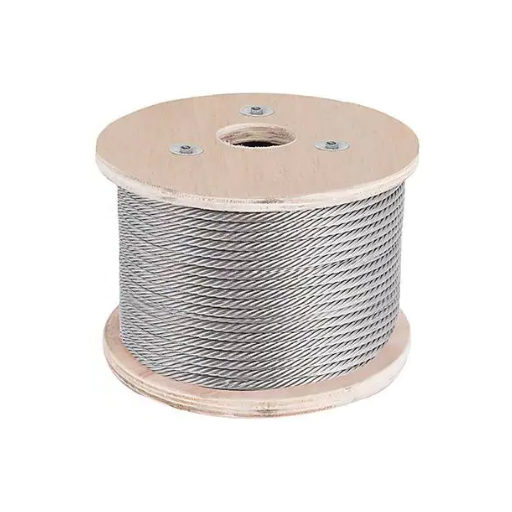
| Category | Details |
|---|---|
| Preparation | Clean surface, remove grease and contaminants |
| Welding Methods | TIG, MIG, Stick welding options available |
| Filler Materials | Use 316L grade filler to match properties |
| Challenges | Thermal expansion, heat concentration issues |
| Best Practices | Control heat input, use pure shielding gas |
| Machining Tips | Use carbide tools, apply cooling techniques |
| Finish | Polish for smooth appearance if required |
| Applications | Suitable for food, marine, and architecture |
Best Practices for Welding 316 Stainless Steel
During 316 stainless steel welding, some special procedures must be adopted. The reason is to retain its properties of strength, resistance to corrosion, and appearance. The top guidelines, based on current knowledge and facts, are as follows:
1. Use the correct filler materials
- It is essential to choose the appropriate fillers, which in this case are 316, 316L, and 317L, for the best strength and resistance to welding corrosion. The properties of these fillers are equal to or stronger than the base metal’s.
- Using appropriate filler metals prevents problems due to cracking, conductive corrosion, and tight crevice corrosion, mainly during the maintenance of elements used in offshore installations, chemical plants, and other aggressive environments.
2. Clean before welding
- Wash the area to be welded with industrial saline water and/or diluted detergent to prepare the material’s surface for weldment removal and avoid any contaminants that can lower the quality of the welds manufactured.
- According to a comprehensive review of current literature, welding before contamination is one factor responsible for the formation of oxidation defects and reduction in the strength and durability of structures.
3. Maintain heat input within limits
- It will cause sensitization through the growth of carbides at grain boundaries in most stainless steel sheets, which will lead to the loss of corrosion properties.
- Utilizing low heat, short arc, and intermittent welds with cooling between successive runs minimizes heat warpage.
- According to interpass research findings, an interpass as high as 350°F (177°C) does not affect the performance of this material.
4. Choose the appropriate welding procedure
- TIG or Gas Tungsten Arc Welding is the process of choice for scale-free welds and improved appearance welds.
- SMAW can be used in the field for convenience, and GMAW can be used for speedy welding on big projects.
- The most recent finding suggests that TIG welding achieves the highest corrosion resistance, and medical devices are recommended for critical use.
5. Suffice Shielding Gas
- Double argon, single argon, or even mixed argon with a small percentage (1-5%) of hydrogen are less oxidizing and more weld pool stable for stainless steel welding.
- Industry authorities note that the wrong choice of gas may even lead to colored welds or poor-looking beads.
6. Conduct/Perform Post-Weld Treatment
- It includes surface treatment like pickling and passivation to reestablish protective chromium oxide and to clear the weld surface from heat tint/oxide scale.
- Mechanical cleaning may involve brushing the surface with stainless steel tools, which ensures that foreign elements are not introduced into the material, affecting its properties.
7. Control distortion
- To control distortion, use techniques such as back purging, symmetrical welding, proper joint preparation, and so on.
- While CAD may be enough for many cases, others rely additionally on FEA, which shows that good joint design reduces labour and repairs in final construction and achieves dimensional tolerance.
8. Avoid Risks of Intergranular Corrosion by Using Low-Carbon or Stabilized Grades
- Where there is a tendency for intergranular corrosion of the welding, stainless steel 316L grade 316 is applied because of its reduced carbon content, which is less than 0.03%; hence, there is no risk of carbide precipitation.
- It has been noted that 316L welds are preferred in corrosive environments like the pharmaceutical or food industries.
This way, welders make durable, practical, and good-looking 316 stainless steel welds acceptable in harsh industries. Industrial revolutions and data collected from the present day suggest that these methods of wielding stainless steel are the basis.
Challenges in Welding 316 Stainless Steel
The steel grade 316 being welded is not an easy process. The difficulties must be handled well for the welding and the long-term performance to be achieved. The challenges could include the following:
- Temperature: The Risk of Sensitization.
- Sensitization occurs when grade 316 steel is heated between 425°C and 870°C, precipitating chromium carbides on the grain boundaries, which lowers the resistance to intergranular corrosion. Exploring practices that control the heat, coupled with using low-carbon alloys such as 316L, provides solutions to this problem.
- Thermal Expansion Induced Distortions
- The coefficient of thermal expansion of stainless steel is higher than that of many other materials, so warping and distortion during welding are quite common. This means heat input must be controlled, and workpieces must be clamped properly to avoid structural defects.
- Discrepancies Regarding Made Welds
- Welds may be made with defective techniques, which can cause defects like porosity, incomplete fusion, and cracking. However, there is evidence that changing the welding speed and filler material could lower the defect rate and result in overall quality welds.
- Demanding Unique Filler Metals
- Choosing the right filler metal, like ER316L or ER316, is essential to retain both corrosion and mechanical properties. If inappropriate filler metals are used, shoddy welding will improve the welded section’s strength and durability.
- Contamination of the Outer Surface
- Contaminants such as iron particles or grease will lead to rust formation or a change in colour on the material’s surface. Cleaning the surface often, using cleaning agents, or applying passivation techniques is necessary to restore the material’s corrosion resistance and the lifetime of the weld.
Overcoming the above challenges requires much more than meets the eye; it calls for expertise, using requisite protocols, and constant supervision while welding. In other words, welders can surmount these issues provided they follow the right guidelines.
Post-Weld Treatment for 316 Stainless Steel
I will try to minimize the problem related to the post-weld treatment of grade 316 stainless steel by taking the necessary actions. First, I clean the weld area well, as those contaminants, such as oxides and weld discoloration, should have been removed. This is usually done with the help of chemical cleaners or physically, or simply by brushing. Then, I do a passivation treatment to stimulate the formation of a chromium oxide layer to provide extra protection to the material. Also, some welds require stress, removal, and changes in dimensions, and some heating up for that. Careful use of these methods allows for reasonably maintaining the qualities of the stainless steel as well as the corrosion resistance of the material.
Comparative Analysis of Stainless Steel Grades
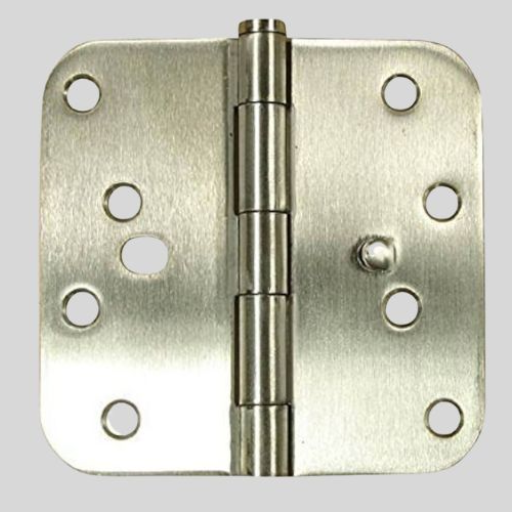
Stainless steel grade 316 can be found in different categories depending on the constituent material and ‘conditions of usage’. However, the most common stainless steel grades include 304, 316, and 430.
- Grade 304 is an example of the universally acclaimed austenitic stainless steel with 18% chromium and 8% nickel. It has excellent resistance to corrosion and oxidation and therefore finds use in many fields, largely used in household kitchens and industries.
- Grad 316: This particular grade consists of, in addition to the usual alloy, 2-3% of molybdenum. It helps to develop resistance against irritants and chlorides. It best suits marine applications, chemical plants, and health care equipment.
- Grade 430: This ferritic stainless steel has 17% chromium. It is also cheaper and has a good tolerance for environmental corrosion. It is especially popular for applications requiring decorative functions and normal household appliances.
These grades each have certain advantages that make them usable for this or that purpose, whether it is strength and stiffness, resistance to corrosion, or permissible price.
Differences Between 316, 304, and 316L Stainless Steel
| Category | 316 Stainless Steel | 304 Stainless Steel | 316L Stainless Steel |
|---|---|---|---|
| Chemical Composition | 16-18% Cr, 10-14% Ni, 2-3% Mo | 18-20% Cr, 8-10.5% Ni | 16-18% Cr, 10-14% Ni, 2-3% Mo, low Carbon |
| Corrosion Resistance | Excellent, even in chlorides | Good, less resistant to pitting | Superior to 316, best for corrosive settings |
| Mechanical Properties | Higher strength, good tensile properties | Moderate strength, commonly adequate | Similar to 316, less prone to sensitization |
| Weldability | Good, no post-weld annealing needed | Excellent, weld-friendly | Superior to 316, resists weld decay |
| Common Applications | Marine, chemical, and heat exchangers | Kitchenware, food equipment, and basic structures | High-purity environments, cleanrooms |
Understanding Ferritic and Martensitic Grades
Classification of Ferritic Stainless Steel:
Ferritic stainless steel contains high iron concentrations with chromium in 10.5% – 30% content. Very low carbon levels are present, usually below 0.2%. Stress corrosion cracking on thick ferritic stainless steels is rarely encountered, and the material is easily drawn or stretched, since stretch forming forces little elasticity. Accordingly, this type of stainless steel is less resistant to high corrosion than the austenitic groups. Such applications are automotive parts, industrial facilities, or even some decoration work done at the house. Other ferritic grades include the 430, readily available for kitchen utensils and domestic appliances, and 409, primarily used in automotive exhaust systems.
Features of Ferritic Grades:
- Excellent oxidation and corrosion resistance in low-aggressive conditions.
- Good conducting and heat conduction are thus applicable for heat patients.
- Economically plausible than stainless steels, these variable alloys of nickel stainless steels.
Structure of the Class – Martensitic Stainless Steel:
Higher carbon contents in martensitic specialty steels, about 0.1%—1.2%, are retained, whereas chromium content is elevated beyond 12% up to 18%. Heat treatment can improve the machinability and durability of such steels. Martensitic steels belong to the family of magnet steels and are very common in different products where frontline strength and toughness are required, for example, surgical tools, knives, turbine blades, or valves.
Characteristics of Martensitic Degree:
- High strength and hardness values in the particular grade 316 or other steels after heat treatment.
- Corrosion resistance is low enough to be employed in nonsubmerged environments without any exposure to water or chemicals.
- Typically, grade 420 is used in knives and other small articles, and grade 440C is within the scope of the advanced performance industry.
Ferritic vs. Martensitic Grades – A Comparison:
| Property | Ferritic | Martensitic |
|---|---|---|
| Chromium Content | 10.5%–30% | 12%–18% |
| Carbon Content | Low (≤ 0.2%) | Medium to High (0.1%–1.2%) |
| Hardening Capability | Not hardenable | Hardenable with heat treatment |
| Corrosion Resistance | Moderate to High | Moderate |
| Magnetic Properties | Magnetic | Magnetic |
| Typical Applications | Automotive parts, appliances | Knives, surgical tools, and valves |
Recent Data Insights:
Market research shows that the global demand for ferritic stainless steels continues to increase sustainably because of their relatively cheaper cost and greater applications in the automotive and construction industries. Ferritic steels account for 27% of worldwide stainless steel production. In contrast, the martensitic grades, unlike the greater portion mentioned earlier, are being used more and more in the precision engineering tool and energy industries sectors due to their mechanical features, which are pretty attractive. Improvements, including the creation of supermartensitic stainless steels that far exceed the existing properties of weldability and corrosion, facilitate the use of martensitic grades in other areas.
In many fields where different types of stainless steel are required, consumers use both ferritic and martensitic stainless steels because they offer cheaper and more performance-oriented solutions.
Choosing the Right Grade of Stainless Steel for Your Project
Selecting the right grade of stainless steel for your construction or manufacturing needs is essential for completing the project, keeping the costs within the budget, and extending the service life of the products. Stainless steel has many bold grades, each suitable for specific ways and uses. Knowing these attributes helps relieve people’s decision-making process and allows them to achieve better manufacturing and consumption outcomes. The most widely used five grades of stainless steel are briefly described below, with other details such as their properties, and their most appropriate varying regions of use:
- In Stainless Steel of grade 304
- Properties: Stainless steel of grade 316 is most susceptible to corrosion and lacks carbon within its structure. Stainless steel and sterling silver are non-magnetic and very hard materials.
- Applications: Most suitable for use in the kitchen, food processing equipment, and construction.
- Data: Composition 18 percent chromium, eight percent nickel, historically known as 18/8.
- 316 Stainless Steel
- Properties: It builds on the corrosion-resistant features of the 304 with the addition of molybdenum to sustain in more aggressive conditions where chloride ions exist, such as seawater or a chemical environment.
- Applications: Marine applications, chemical storage tanks, and medical instruments.
- Data: Contains 16 to 18% chromium, 10 to 14% nickel, or 2 to 3% molybdenum for superior corrosion resistance.
- 430 Stainless Steel
- Properties: It is a type of ferritic stability with fair corrosion resistance and pleasing surface aesthetics. It is cheaper than 304 and magnetic.
- Applications: Can be found in appliances of refrigerators and water heaters, automobile wall panels, and cases.
- Data: Possesses around 16–18% chromium, and it is pretty significant in practice in areas that do not encourage the need for critical use.
- 410 Stainless Steel
- Properties: It is very hard and resistant to wear, with a moderate level of corrosion resistance. It is heat treatable for increased hardness.
- Applications: Subtype is made of cutlery, bolts, and pump stems.
- Data: The chemical composition of raw materials contains 11. 5% to 13. 5% of chromium, which is increased through heat treatment.
- 2205 Duplex Stainless Steel
- Properties: Borrows its merits of strength from being a part of ferritic and austenitic grades, excellent corrosion resistance, and is more so in weight. Not easily affected by temperature and pressure, they can be used in and around hostile climates.
- Applications: Used comprehensively in petrochemical plants, marine, and building components.
- Data: It contains close to 22% chromium, 5% nickel, and even nitrogen to provide strength.
By carefully examining the distinct advantages and capabilities of each grade, you can choose the best possible stainless steel for the particular project. That said, it is critical to explore environmental conditions, amount, structural strength, and corrosion resistance, among other factors, to ensure the product’s durability and performance.
References
- Design of an Additively Manufactured Functionally Graded Material of 316 Stainless Steel and Ti-6Al-4V
Published on ScienceDirect, this study explores designing and fabricating functionally graded materials using 316 stainless steel.
Link to source - Corrosive-Wear Performance of Grade 316 Stainless Steel in NaCl Solution
Published in Springer, this research examines the corrosive-wear behavior of Grade 316 stainless steel in saline environments.
Link to source - Theoretical Study on the Strength of Sigma Composite Columns
Available on ResearchGate, this paper discusses the use of Grade 316 stainless steel in composite columns, analyzing its strength and performance.
Link to source
Frequently Asked Questions (FAQ)
What is grade 316 stainless steel, and how does it compare to other stainless steel alloys?
Grade 316 stainless steel is an austenitic steel known for its excellent corrosion resistance, particularly in chloride environments. It contains a higher molybdenum content than grade 304, which enhances its resistance to pitting and crevice corrosion. While grade 304 is the second most common stainless steel, grade 316 is preferred in marine applications and chemical processing due to its superior durability and strength.
What are the mechanical properties of austenitic stainless steel grade 316?
Austenitic stainless steel grade 316 exhibits impressive mechanical properties, including high tensile strength and toughness. Its low carbon content minimizes the risk of carbide precipitation during welding, which can weaken the structure. Additionally, grade 316 has good formability and weldability, making it suitable for various applications, from fasteners to pressure vessels.
How does the chemical composition of grade 316 affect its performance?
The chemical composition of grade 316 includes chromium, nickel, and molybdenum, which collectively contribute to its corrosion-resistant properties. Adding molybdenum enhances its resistance to oxidation and pitting in aggressive environments. The nickel content provides ductility, while the chromium enhances the overall corrosion resistance, making it ideal for use in corrosive environments.
What industries commonly use grade 316 stainless steel?
Grade 316 stainless steel is widely used in various industries, including food processing, chemical processing, and marine applications. Its excellent resistance to corrosion and high temperatures makes it suitable for environments where hygiene and durability are critical. Applications range from food industry equipment to pipelines and pressure vessel components.
How does cold working affect the properties of grade 316 stainless steel?
Cold working can enhance the mechanical properties of grade 316 stainless steel by increasing its strength and hardness through strain hardening. However, this process may also lead to reduced ductility. Considering the balance between strength and ductility when designing components that will undergo cold working, especially in high-stress applications, is essential.
What is the resistance to corrosion of grade 316 compared to carbon steel?
Grade 316 stainless steel offers significantly better resistance to corrosion than carbon steel, primarily due to its alloying elements like chromium and molybdenum. While carbon steel can rust quickly in the presence of moisture and corrosive substances, grade 316 remains resistant to oxidation and pitting, making it suitable for harsh environments and applications where corrosion is a concern.
Is grade 316 stainless steel non-magnetic?
Yes, grade 316 stainless steel is considered non-magnetic in its annealed state. This characteristic is beneficial in applications where magnetic interference can be an issue. However, it is essential to note that cold working can induce some magnetism in the material, but generally retains its non-magnetic properties.
What are the advantages of using grade 316 over 304L stainless steel?
While grade 316 and 304L stainless steels are austenitic and share similar properties, grade 316 offers enhanced resistance to corrosion due to its higher molybdenum content. This makes grade 316 more suitable for applications in marine environments or those exposed to chloride ions. Additionally, grade 316’s superior high-temperature performance and toughness provide advantages in demanding applications compared to 304L.

